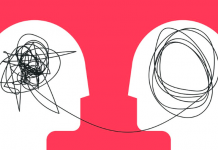The digital revolution has been profoundly impacting our lives and different fields, and dentistry is no exception. From embracing 3D technology to computer-aided design and computer-aided manufacturing (CAD/CAM) software, digitalization has been reshaping the industry by storm.
The best part about these shifts is that they have significantly improved the overall experience of patients, dental professionals, and laboratories. What are these substantial advantages?
More Accurate and Efficient Results and Procedures
Digital solutions in dentistry can reduce uncertainties and errors typically caused by human limitations. They can provide more precise results at every stage of the workflow, resulting in more effective and efficient procedures.
One good example of digital technology in dentistry is an intraoral 3D scanner, a machine renowned for its high accuracy. In just one or two minutes of scanning, it can provide teeth structure information much faster than the traditional way of taking an impression. Additionally, these 3D scanning results are much clearer and more accurate than traditional impressions.
CAD/CAM software tools are another digital solution specifically used in restorative dentistry. These tools enable dentists to provide patients with more accurate and stronger dimensionally stable restorations than their traditional counterparts. They can also automatically delete and rescan the impression if the dentist isn’t satisfied with it, even if the case is complex.
These features result in improved accuracy, shorter waiting periods, and minimized outsourcing costs.
Time- and Cost-Saving
The enhanced accuracy of digital dentistry solutions can improve dental procedures’ efficiency, reduce turnaround time, and eliminate retake costs. In a dental practice, this doesn’t only benefit dentists but also satisfies patients.
Let’s still use digital intraoral scanners as an example. They can get rid of the variables that inevitably occur in traditional impressions, such as bubbles and distortions. This enhanced accuracy can eliminate the need to retake the whole procedure, saving time and costs for dentists and patients. Even if the procedure has to be retaken, digital solutions can still streamline the whole procedure.
For example, an American patient had to retake his root canal treatment in Brisbane, but he had to fly back to the U.S. soon. With these digital intraoral scanners, the patient doesn’t have to worry about missing his flight since even the retakes have reduced chair time, thanks to the scanner’s instant imaging feedback.
These also eliminate impression materials costs, as well as the need and potential expenses to ship them to laboratories.
Improved Patient Experience and Comfort
The increased productivity, efficiency, and accuracy of digital dentistry solutions can also provide patients with better experience and comfort.
For example, with intraoral scanners, patients don’t have to use any traditional impression materials that can cause them to gag. In addition to their faster and more accurate results, intraoral scanners are generally more comfortable for patients.
It’s natural that some patients may have trust issues about new digital solutions for dental diagnosis and treatment. However, once they hear of the efficiency, fluidity, and overall comfort that other patients have experienced, they’ll likely return for visits.
It may take some time, but it won’t take too long until their confidence and trust significantly increase.
Effective Communication with Patients and Labs
Digital solutions in dentistry can also improve the communication between dentists and patients. For example, with the help of real-time 3D images, patients can easily visualize their oral health condition and understand the results and progress of their treatment.
The process of using digital impression systems leaves professional, accomplished, and advanced impressions to the patients. As a result, it’ll likely engage more patients, who’ll also potentially move forward with treatment plans.
This effective communication doesn’t only work between patients and dentists. It also benefits dentists and laboratories. Depending on the case, digital solutions make both clinics and laboratories more liberated in optimizing speed, ease of use, or cost, simplifying the workflow between them.
Good Return on Investment (ROI)
The advantages of going digital in dentistry can result in outcome quality and significantly lower material costs and chair time. All these can result in more opportunities and competitiveness for both dental clinics and laboratories.
More importantly, the payback of these digital transformations in dentistry can be instantaneous. These include better treatment presentation, more patient acceptance, and increased new patient visits, which can all generate higher ROI.
While some patients might go reluctant at first, they’ll likely commit to a treatment plan once they hear positive feedback from other patients. After they have a smooth, comfortable digital solution experience themselves, they’ll likely bring in more new patients, and the cycle goes on.
These referrals and customer feedback will boost customer experience and drive more revenue for an optimized ROI.
Final Thoughts
Today’s generation is embracing a high-performance culture. Everything’s expected to be fast, efficient, and adaptive, and so should dental practices. In today’s digital revolution and the new era of digital dentistry, incorporating digital solutions is the only way to stay ahead of the competition.











